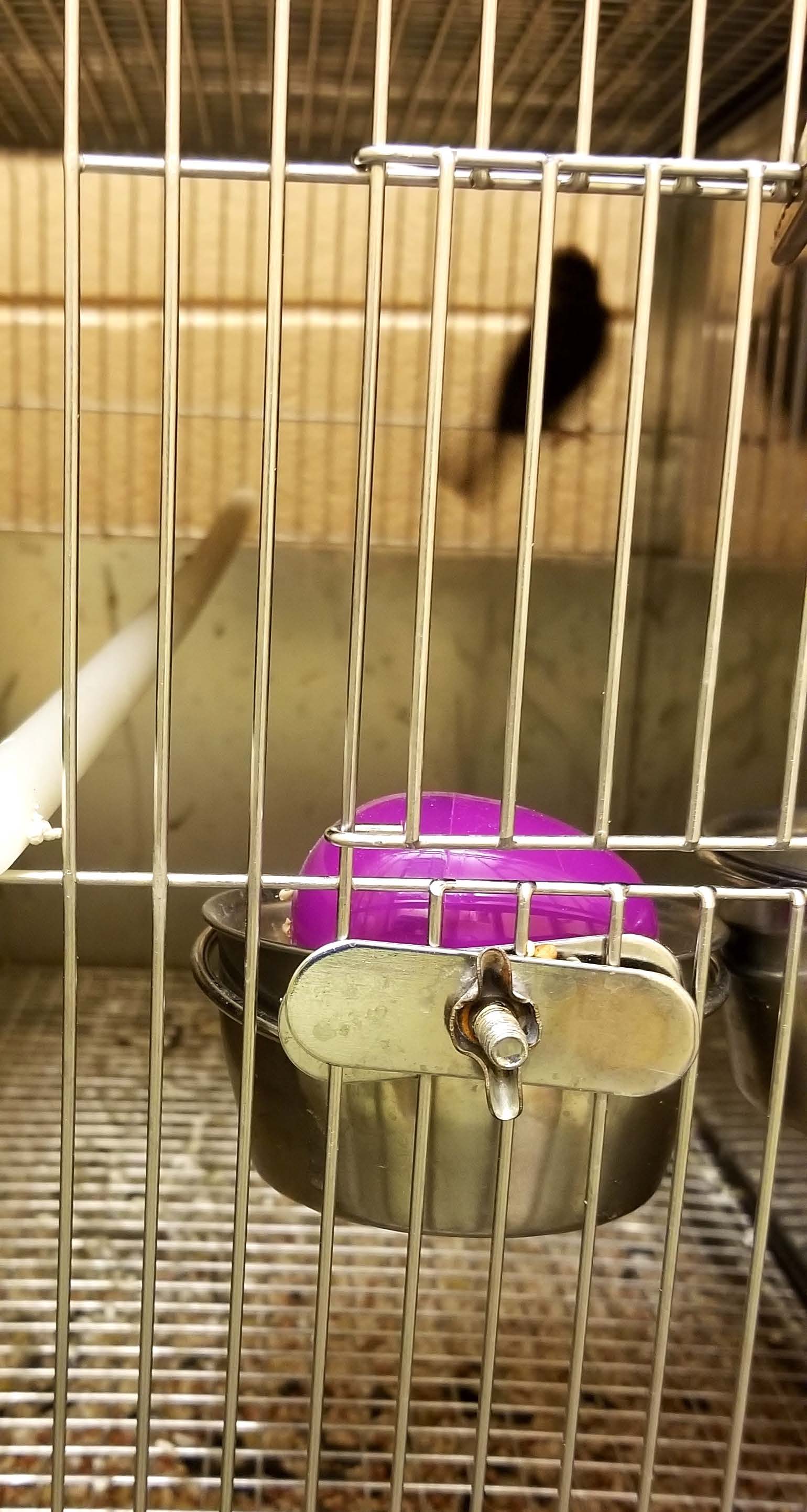Object Neophobia in Male House Sparrows
July 25, 2022

Sparrow during a Neophobia trial
– the Lattin Lab
A fearful response towards new things (“neophobia”) partly determines whether animals will be to take advantage of new food sources and nesting sites and avoid novel dangers. Because humans have altered wildlife habitats worldwide, understanding more about why some individuals avoid and others interact with new things may be critical to understanding which animals will be able to live in novel urban and suburban habitats and which will not.
Researchers in the Lattin Lab at Louisiana State University study neophobia in house sparrows, a globally invasive songbird. Some individual sparrows have very fearful responses towards new things, while others are quick to approach novelty, and these “personality types” are consistent over time. A new study from the lab in press at the journal Hormones and Behavior investigates what hormones control the fearful response of an individual towards something new. When an animal encounters something stressful in its environment, like a predator, this causes both the fast activation of its “fight-or-flight” response and a slower release of hormones called glucocorticoids. Glucocorticoids cause behavioral and physical changes that help animals respond to stressors. The study’s hypothesis: if animals perceive new things to be stressors, then glucocorticoid hormones may partly control how “scared” an individual is of novelty.
To test this hypothesis, researchers gave captive house sparrows a drug that lowered their glucocorticoid levels for several days and recorded how long it took sparrows to feed when a novel object like a plastic Easter egg was presented in, on, or near their food dish. They found that when house sparrows had lowered glucocorticoid hormone levels, they were quicker to feed in the presence of a novel object than when their glucocorticoid levels were at their normal levels. To make sure that the drug did not simply make them hungrier, researchers also recorded how long it took sparrows to feed when there was no novel object present, and found no difference in the time to feed in sparrows treated with the drug or a control. This means that the change in behavior only happened in the presence of a potentially threatening novel object.
Although this is clear evidence that glucocorticoids affect neophobia, exactly where and how glucocorticoids act to affect neophobia is still unknown – for example, which receptors or neurotransmitters are involved, and in what parts of the brain? The lab hopes to explore these questions in future research.
Overall, this research shows that glucocorticoid hormones can affect sparrow personalities to make them more “fearful” and less “daring” towards new things. Wild animals are experiencing more and more human-caused stressors, such as habitat degradation, chronic noise, and novel predators. All of these stressors can cause glucocorticoid secretion, and the lab’s research suggests that if low glucocorticoids make sparrows more “daring,” then high glucocorticoids may make sparrows more “fearful.” Being more “fearful” may exclude animals from potential new resources and ultimately affect their ability to live in human-altered environments like cities.